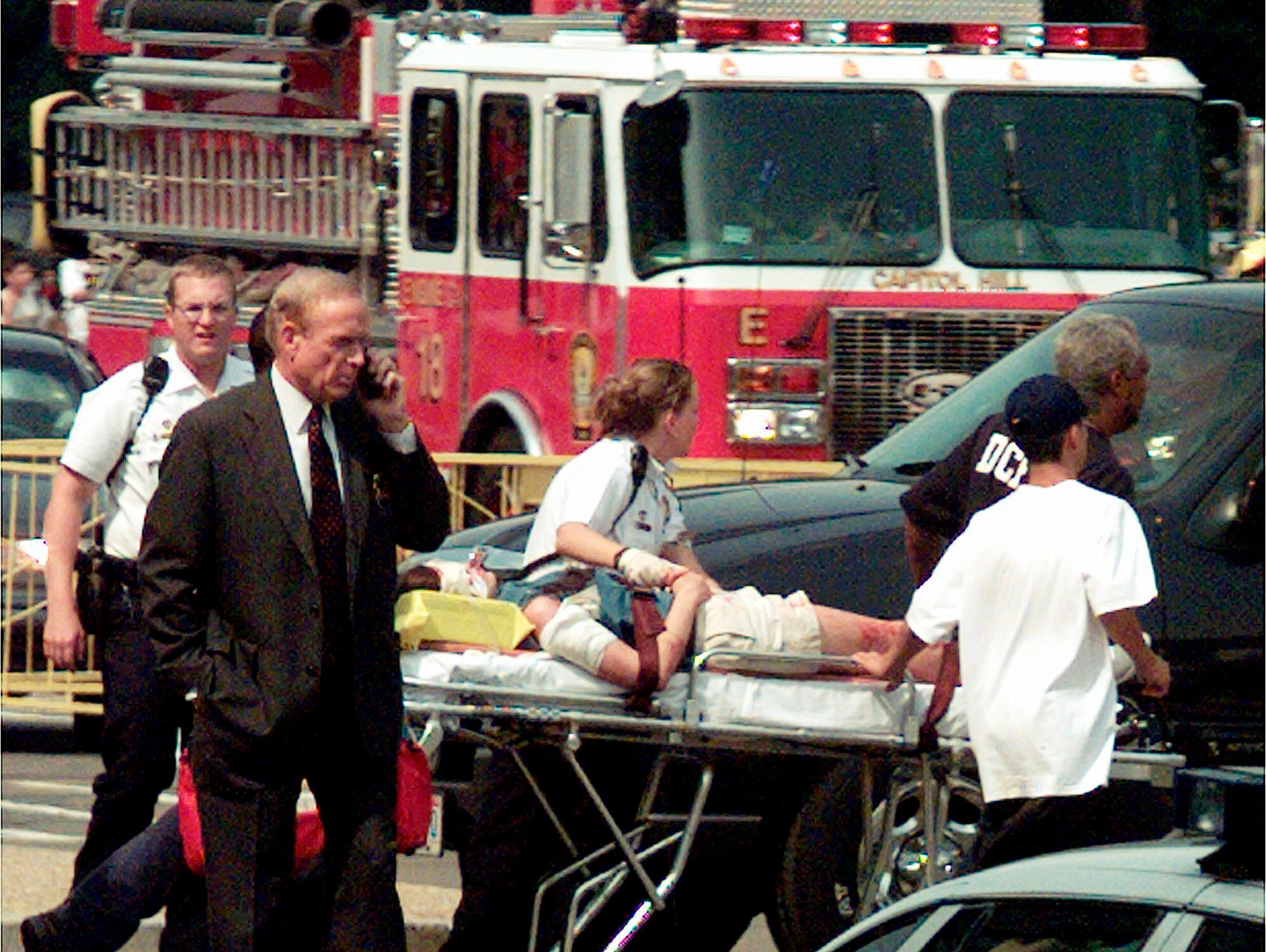Capitol has seen violence over 220 years, but not like this
In more than 220 years, the U.S. Capitol had seen nothing like it: a roiling mob, forcing its way past its majestic marble columns, disrupting the passage of power, desecrating the seat of the world’s greatest democracy

Your support helps us to tell the story
From reproductive rights to climate change to Big Tech, The Independent is on the ground when the story is developing. Whether it's investigating the financials of Elon Musk's pro-Trump PAC or producing our latest documentary, 'The A Word', which shines a light on the American women fighting for reproductive rights, we know how important it is to parse out the facts from the messaging.
At such a critical moment in US history, we need reporters on the ground. Your donation allows us to keep sending journalists to speak to both sides of the story.
The Independent is trusted by Americans across the entire political spectrum. And unlike many other quality news outlets, we choose not to lock Americans out of our reporting and analysis with paywalls. We believe quality journalism should be available to everyone, paid for by those who can afford it.
Your support makes all the difference.In more than 220 years, the U.S. Capitol had seen nothing like it: a roiling mob, forcing its way past its majestic marble columns, disrupting the passage of power, desecrating the seat of the world’s greatest democracy.
But this was far from the first time the Capitol has been scarred by violence.
In 1814, just 14 years after the building opened, British forces in the War of 1812 tried to burn it down. The invaders looted the building first, and then set the southern and northern wings ablaze — incinerating the Library of Congress. A sudden rainstorm prevented its total destruction, but the building was left “a most magnificent ruin,” according to architect Benjamin Henry Latrobe.
Over the centuries since, events have made a mockery of the inscription on the rostrum of the House chamber — “Union, Justice, Tolerance, Liberty, Peace.” The building has been bombed several times. There have been shootings. One legislator almost killed another.
The most famous episode occurred in 1950, when four Puerto Rican nationalists unfurled the island’s flag and, shouting “Freedom for Puerto Rico," unleashed a barrage of about 30 shots from the visitor’s gallery of the House. Five congressmen were injured, one of them seriously.
“I did not come to kill anyone, I came to die for Puerto Rico!” cried the leader, Lolita Lebron, when she and the others were arrested.
Before and since, the building has been a target. In 1915, a German man planted three sticks of dynamite in the Senate reception room; it went off shortly before midnight, when no one was around.
The bomber -- who had previously murdered his pregnant wife by poisoning, and would go on to shoot financier J.P. Morgan Jr,. and bomb a steamship loaded with munitions bound for Britain -- killed himself before he could be arrested.
More recently, the Weather Underground set off an explosive in 1971 to protest the U.S. bombing of Laos, and the May 19th Communist Movement bombed the Senate in 1983 in response to the invasion of Grenada. Neither caused any deaths or injuries, but both resulted in hundreds of thousands of dollars in damage and led to tougher security measures.
The most deadly attack on the Capitol occurred in 1998, when a mentally ill man fired at a checkpoint and killed two Capitol Police officers. One of the dying officers managed to wound the gunman, who was arrested and later institutionalized. A nearby statue of Vice President John C. Calhoun still bears a bullet mark from the incident.
In 2013, a dental hygienist with her 18-month-old daughter in tow tried to drive onto the White House grounds, and was chased to the Capitol, where she was shot to death by police.
There have been other, storied attacks. In 1835, a deranged house painter tried to shoot two pistols at President Andrew Jackson outside the building; the guns misfired, and Jackson caned his assailant into submission.
And famously, in 1856, Rep. Preston Brooks attacked abolitionist Senator Charles Sumner with his cane on the floor of the Senate after the senator gave a speech criticizing slavery.
Sumner was beaten so badly that three years passed before he had sufficiently recovered to return to Congress. The House failed to expel Brooks, but he resigned -- and was immediately reelected.